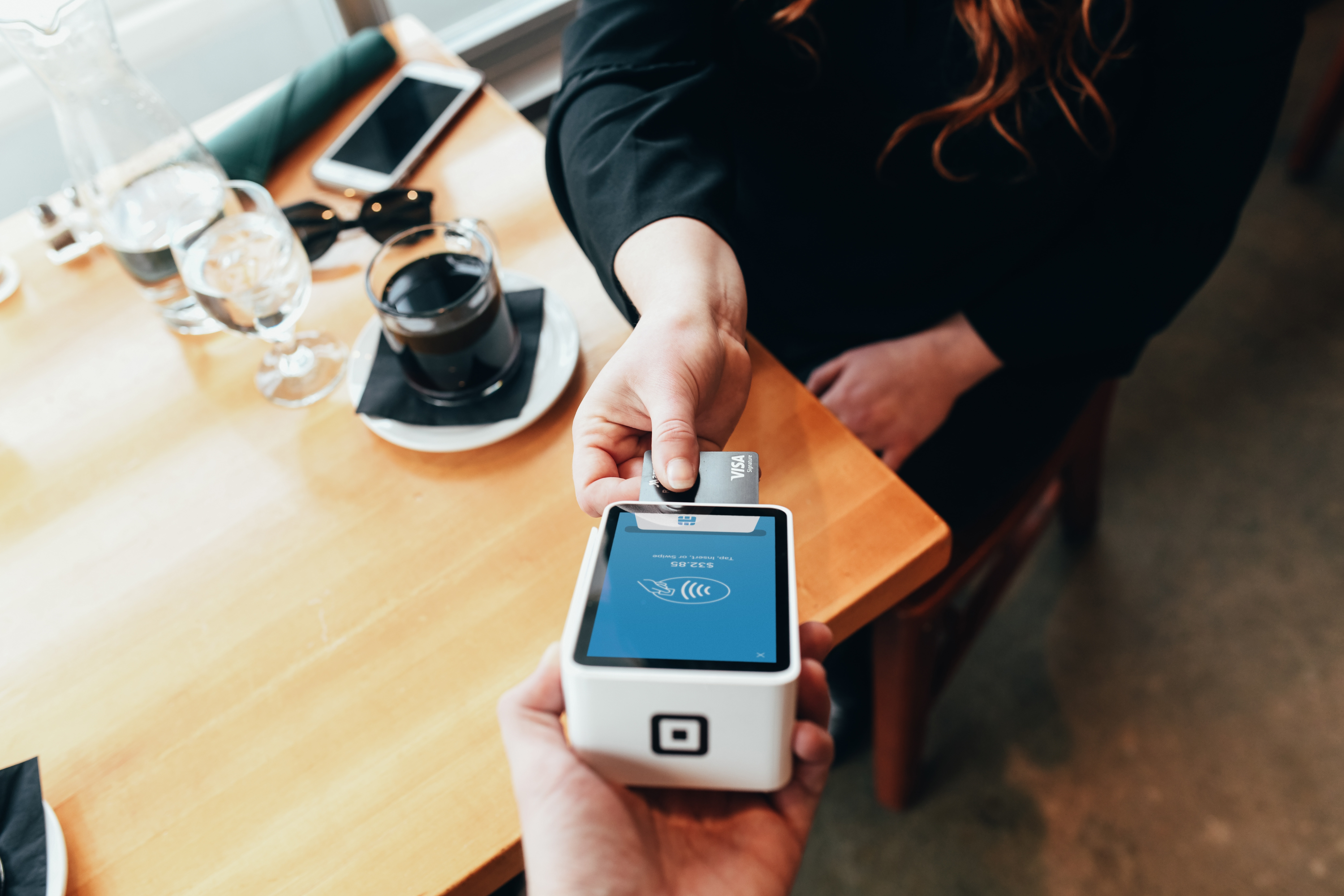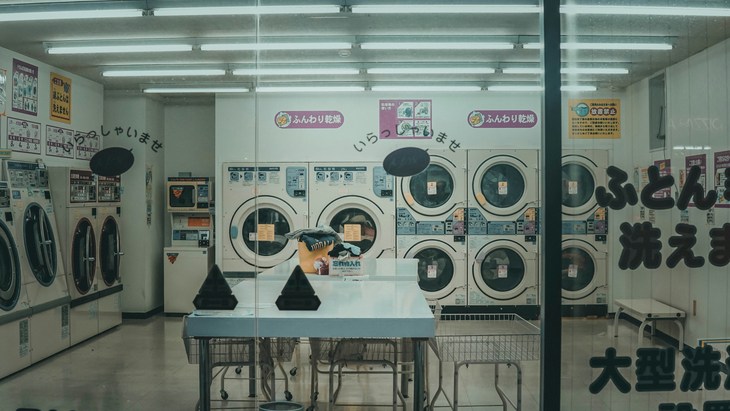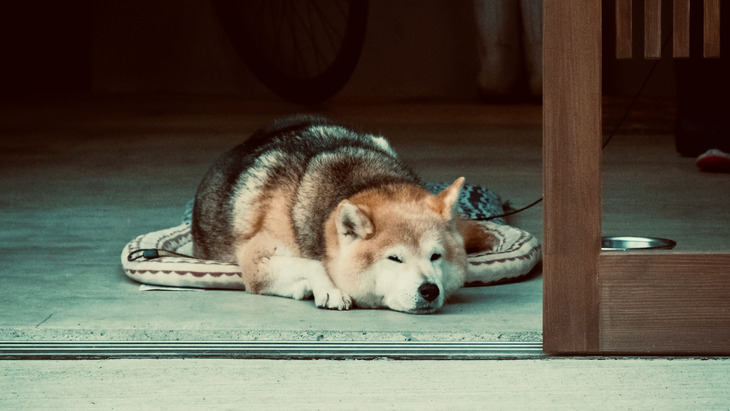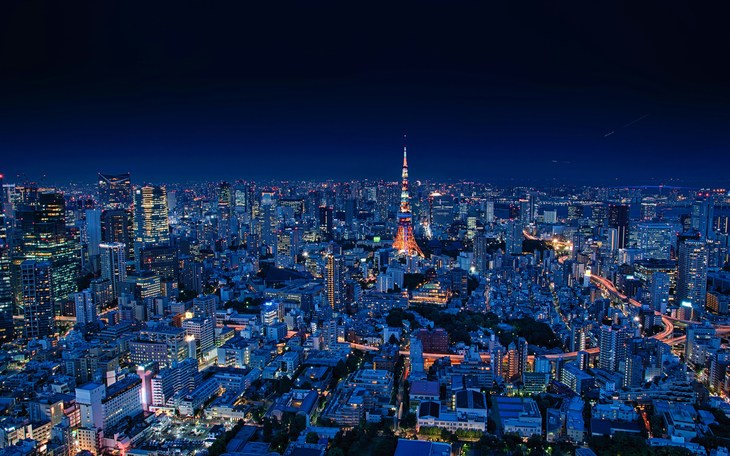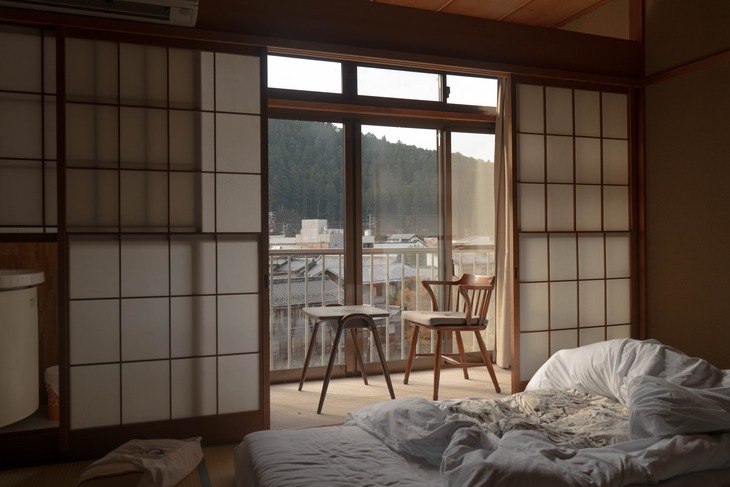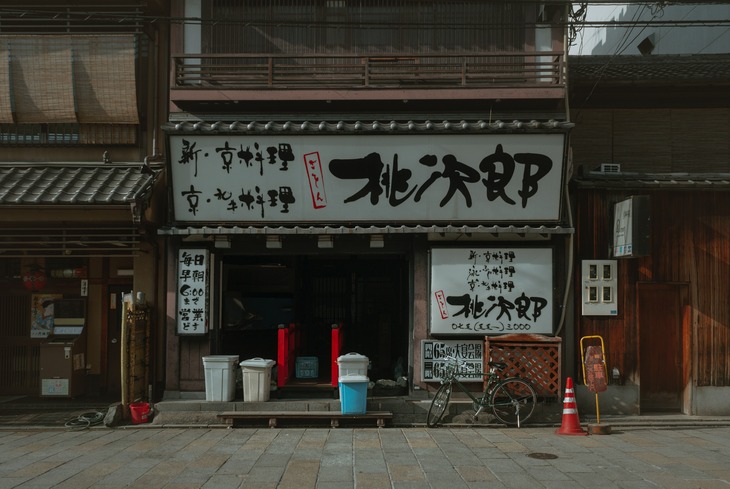Earthquake!! What do I do?!
Since ancient times, earthquakes have been an unfortunate fact of life in Japan. As recently as March 11th, 2011, many precious lives were lost in the Great East Japan Earthquake. Those that were forced to evacuate their homes even now face a harsh reality. We pray that the souls of those who died will rest in peace, and we would like to express our condolences to all those affected by the disaster.
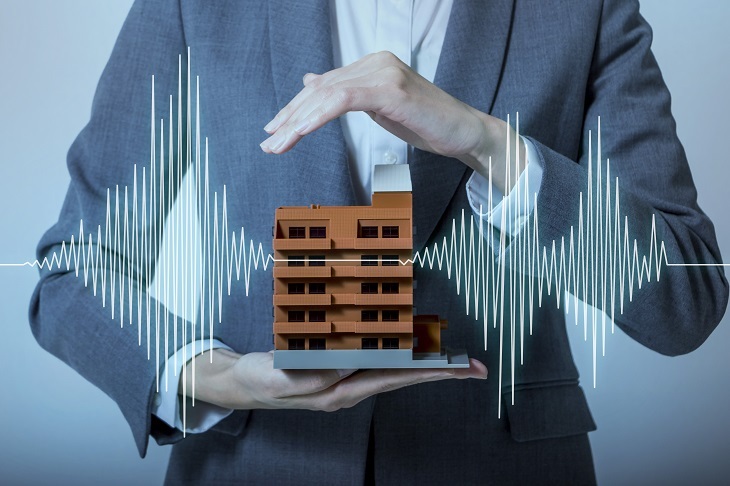
It is extremely difficult to predict when and where large-scale earthquakes will occur. It goes without saying that you never know where you will be when an earthquake occurs, whether you are driving your car, riding the subway, or working at your office. In this blog, we will try to summarize the important points from Tokyo Gas's website, which provides advice for an earthquake that takes place while you're at your home.
1.
When a large earthquake suddenly occurs, the first thing to do is make sure that you're secure from danger. Crouch under a sturdy table or desk and tightly hold onto your legs. In order to shield yourself from falling objects, protect your head with a cushion or pillow if possible, and wait for the tremors to end.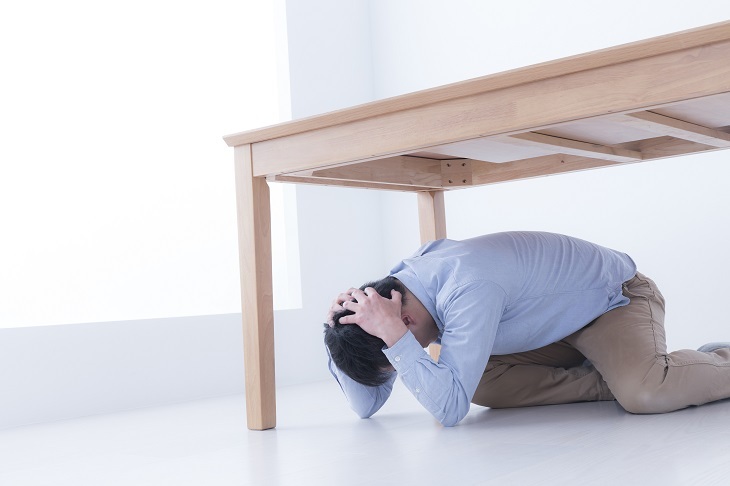
2.
In the event of an earthquake, being able to find and access a safe escape route is important, but it can also be dangerous to run out into the open in a panic. First, find shelter in an area where you are able to protect yourself, and wait for the shaking to pass.
3.
If you are awoken by an earthquake at night, dive under the bed if possible, and cover yourself with as much bedding as you can in order to ensure your safety. Be aware that there may be broken glass and debris around the room, and it can be easy to injure yourself in the dark.
4.
If you are in the bathroom and feel an earthquake, first open the door in order to secure an evacuation route, and wait for the quake to subside. Be careful, as tiles, mirrors, or even the water tank on the toilet may fall and break. In order to protect your head in a pinch use whatever you can find (even the bathtub lid, if necessary!)
5.
If an earthquake occurs while you are cooking, your first instinct may be to put out the fire. However, there is a danger that you might burn yourself, or that hot pots and pans may fall and injure you. First, find cover and wait for the tremors to subside. Tokyo Gas meters are designed to cut off gas automatically when there's a Magnitude 5 or higher earthquake, or when there is an abnormally large flow of gas in the house. Leave the gas meter to take care of the gas, and take care of your own safety first! Once the earthquake has stopped, there will be time to put out the fire. When you evacuate, be sure to cut off the breaker and the main gas valve.
6.
After a large earthquake, fragments of broken window glass and lights may be scattered on the floor. In order to prevent injury, it's recommended that you wear shoes even when indoors. Once you are able to confirm that you and your family are safe, check the latest disaster and evacuation information, and evacuate to your nearest evacuation area. In addition to gas and electricity services being unavailable, even basic supplies like food and water may be in short supply for a few days after a large earthquake. In order to support yourself short term, prepare some daily essentials ahead of time.
7.
Below is an example Emergency Survival Kit. Please note that as a general rule, food and drinking water for three days is required for the entire family.
- Drinking water (3 liters per day)
- Food (Including powdered milk for babies)
- Simple toiletries
- Emergency medicine (don't forget your daily medication either)
- Spare battery (mobile phone, radio, flashlight, etc)
- Spare cash and valuables
- Insurance card, phone book
- Underwear, towels, tissue paper, extra glasses, etc
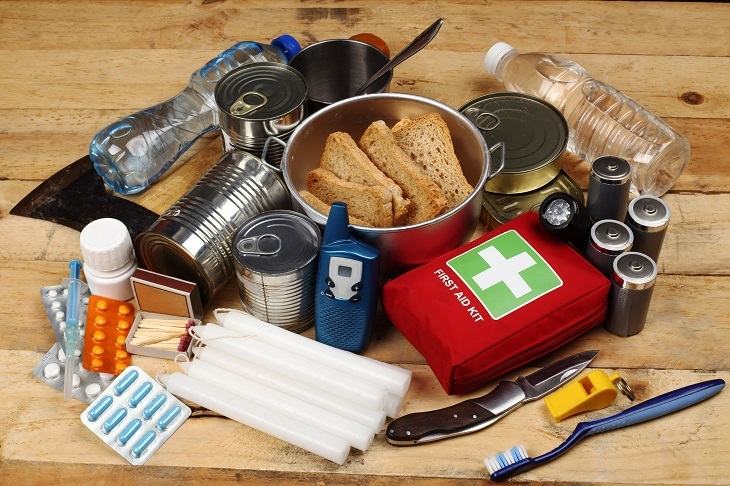
For further information, an English language website containing detailed earthquake countermeasures can be found here: http://www.fdma.go.jp/bousai_manual/e/index.html
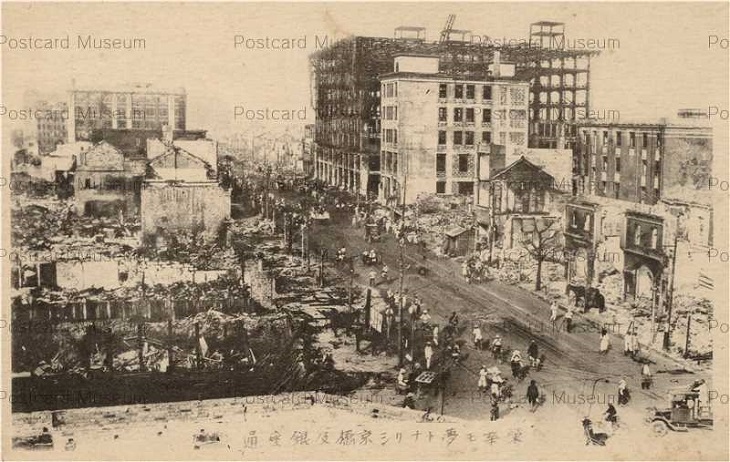
Nihonbashi
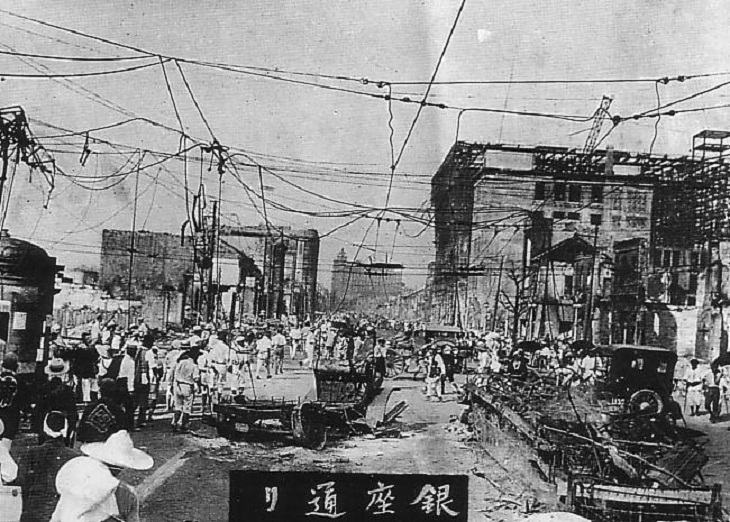
Ginza1
The photographs show the aftermath of the Great Kanto Earthquake that occurred in 1923. The location of the photographs is near Ginza and Nihonbashi, where our company is located. A great deal of destruction was caused during this time, and it is said that as many as 105,000 people in the Tokyo and Kanagawa areas were killed, with many more reported missing.
In order to prepare for the next major earthquake, from as early as grade school, Japanese children regularly practice earthquake preparedness drills. In addition to training children to instinctively duck under cover, the drills instill from a very young age a strong awareness that someday, inevitably, another strong earthquake will come.

Ginza2
There is a saying that says "Prepare first, laugh later." For a foreigner new to Japanese language and customs though, proper earthquake preparedness can be a daunting task. At Tokyo Apartment Inc, we explain from the get-go how to use your apartment's emergency stairs, escape hatch, the location of your fire extinguisher, and so forth. We do our best in our own small way to help you prepare should a major earthquake occur.
















